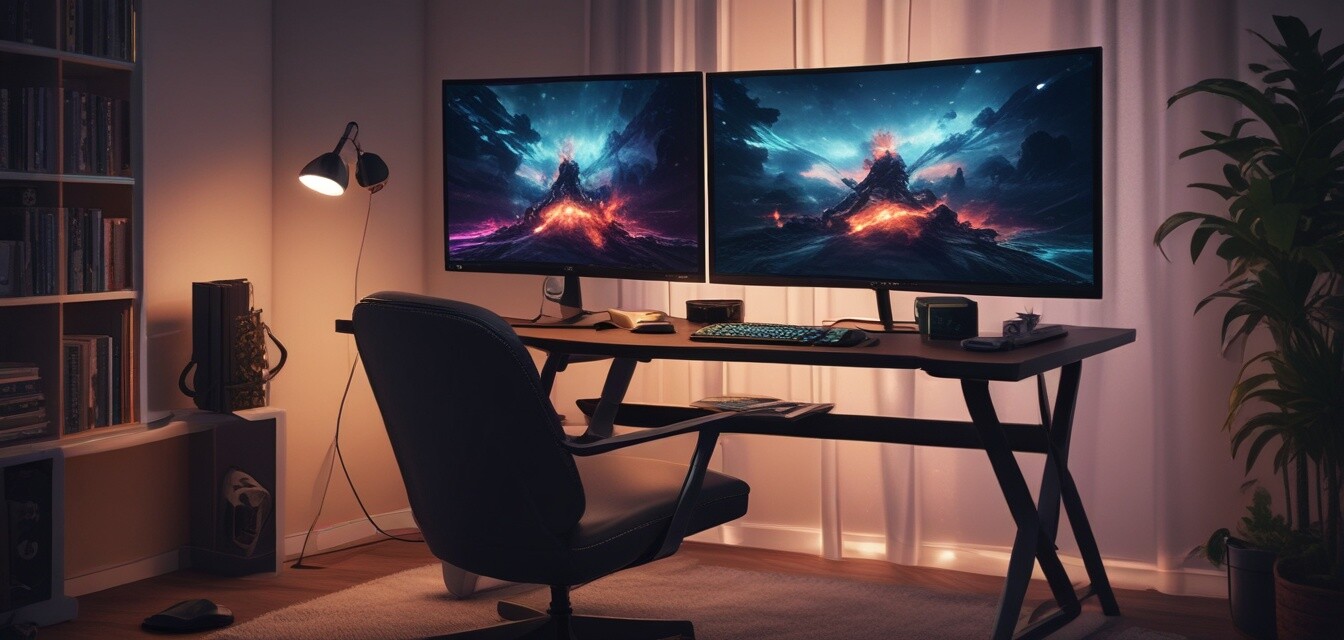
Customizing Your OLED Monitor Setup for Comfort
- Prioritize ergonomics to prevent strain during long gaming sessions.
- Position your OLED monitor at eye level for optimal viewing.
- Incorporate ambient lighting to reduce eye strain and enhance immersion.
- Adjust settings for clarity and color balance depending on your gaming environment.
- Experiment with various setups to find what works best for your comfort.
When it comes to gaming, having the perfect setup is essential for not only performance but also comfort. An OLED monitor can provide stunning visuals, but customizing your setup is crucial for ensuring long hours of gaming are enjoyable and free from discomfort. In this guide, we will explore how to optimize your OLED monitor setup for maximum comfort, focusing on ergonomics, screen positioning, and ambient lighting considerations.
Understanding Ergonomics
Ergonomics is the science of designing the workspace to fit the user’s needs. A well-ergonomic setup can prevent physical strain and fatigue, keeping you focused on your game rather than discomfort. Here are some key ergonomic guidelines:
- **Monitor Height:** Position your OLED monitor so that the top of the screen is at or just below eye level. This helps maintain a neutral neck position.
- **Chair Selection:** Use an adjustable chair that provides good back support, allowing you to maintain a comfortable posture.
- **Keyboard and Mouse Position:** Keep your keyboard and mouse at a height where your arms are bent at about 90 degrees, and ensure your wrists remain straight.
Screen Positioning
The position of your OLED monitor can greatly influence your comfort and gaming experience. Here are some tips for optimal placement:
| Placement Tips | Description |
|---|---|
| Distance from Eyes | The monitor should be approximately an arm's length away, reducing eye strain. |
| Angle of Monitor | Tilt the monitor slightly back, about 10-20 degrees, to avoid glare and improve comfort. |
| Multiple Monitors | If using multiple monitors, arrange them in a semi-circle to reduce neck rotation. |
Incorporating Ambient Lighting
Proper ambient lighting can not only ease eye strain but also improve your overall gaming experience. Here are some considerations:
- **Use Soft Lighting:** Opt for soft, indirect lighting behind or around your monitor to reduce glare.
- **RGB Lighting:** Many gamers use RGB lights to enhance their setup, creating a more immersive environment.
- **Natural Light:** Position your monitor to take advantage of natural light during the day, but avoid direct sunlight.
Adjusting Monitor Settings for Comfort
To further enhance your experience, consider adjusting the following settings on your OLED monitor:
| Settings | Recommended Adjustments |
|---|---|
| Brightness | Set to a level that suits your environment; too bright can cause fatigue. |
| Contrast | Adjust to ensure deep blacks and vibrant colors without losing detail. |
| Color Temperature | Choose a warmer color temperature during evening sessions to reduce blue light exposure. |
Experiment with Setups
Every gamer is different, so it’s beneficial to experiment with various setups. Here are different arrangements to consider:
- **L-Shaped Desk:** Offers ample space for additional accessories while maintaining a comfortable reach.
- **Standing Desk:** Alternating between sitting and standing can reduce fatigue during long sessions.
- **Wall-Mounted Monitors:** Free up desk space and achieve an ideal viewing angle while standing or sitting.
Conclusion
Customizing your OLED monitor setup for comfort is essential for enhancing your gaming experience. By focusing on ergonomics, screen positioning, and ambient lighting, you can create a comfortable and immersive environment. Don’t forget to adjust your monitor settings for clarity and experiment with different setups to find what suits you best.
For more information about choosing the right gaming monitor, check out our Buying Guides section.
Pros
- Improved comfort during prolonged gaming sessions.
- Enhanced visual experience with optimal screen settings.
- Reduced eye strain and fatigue.
Cons
- Initial setup may take time and effort.
- Customization may require additional purchases (like lamps).